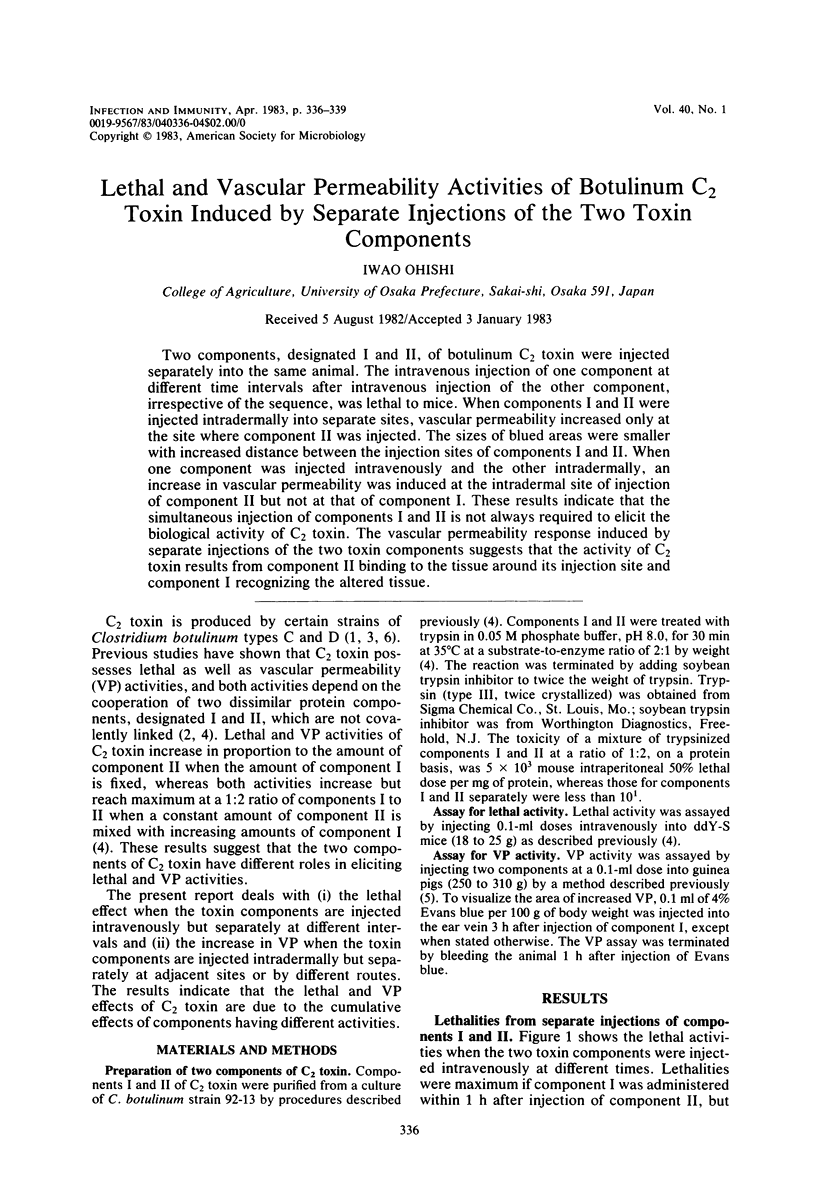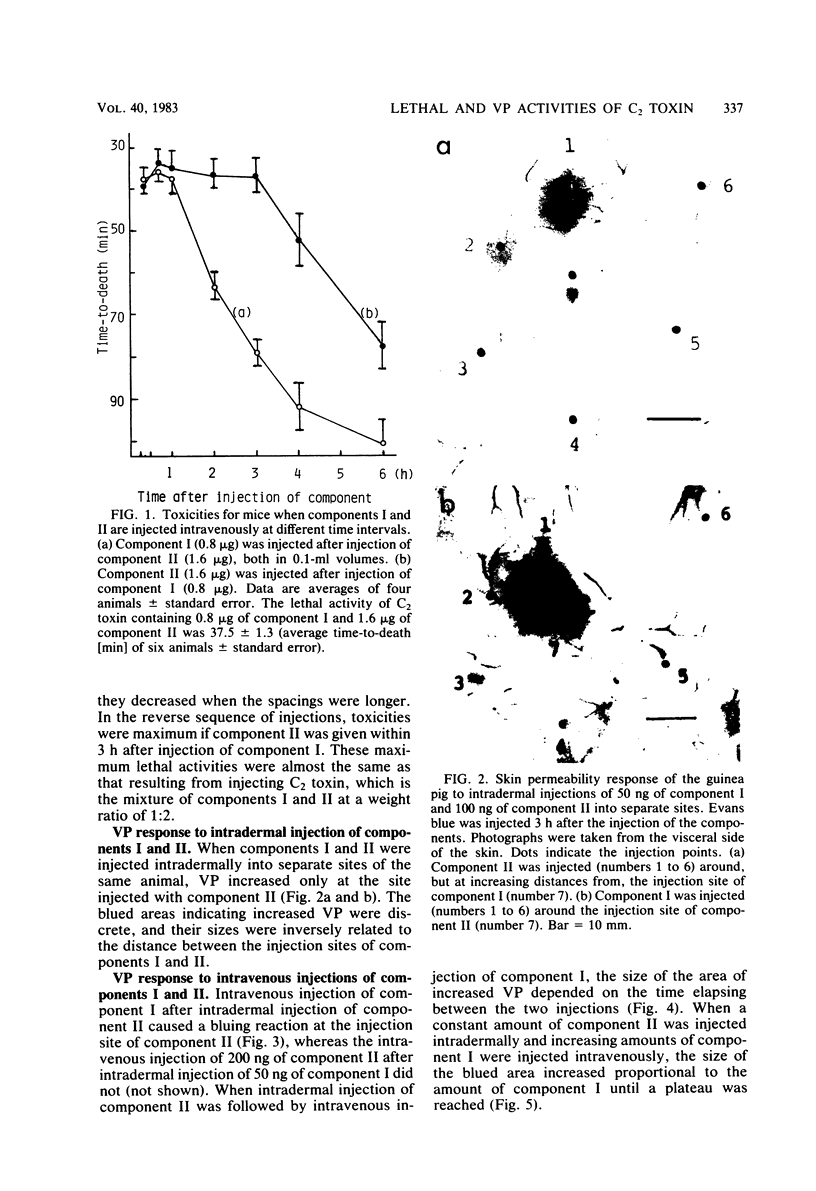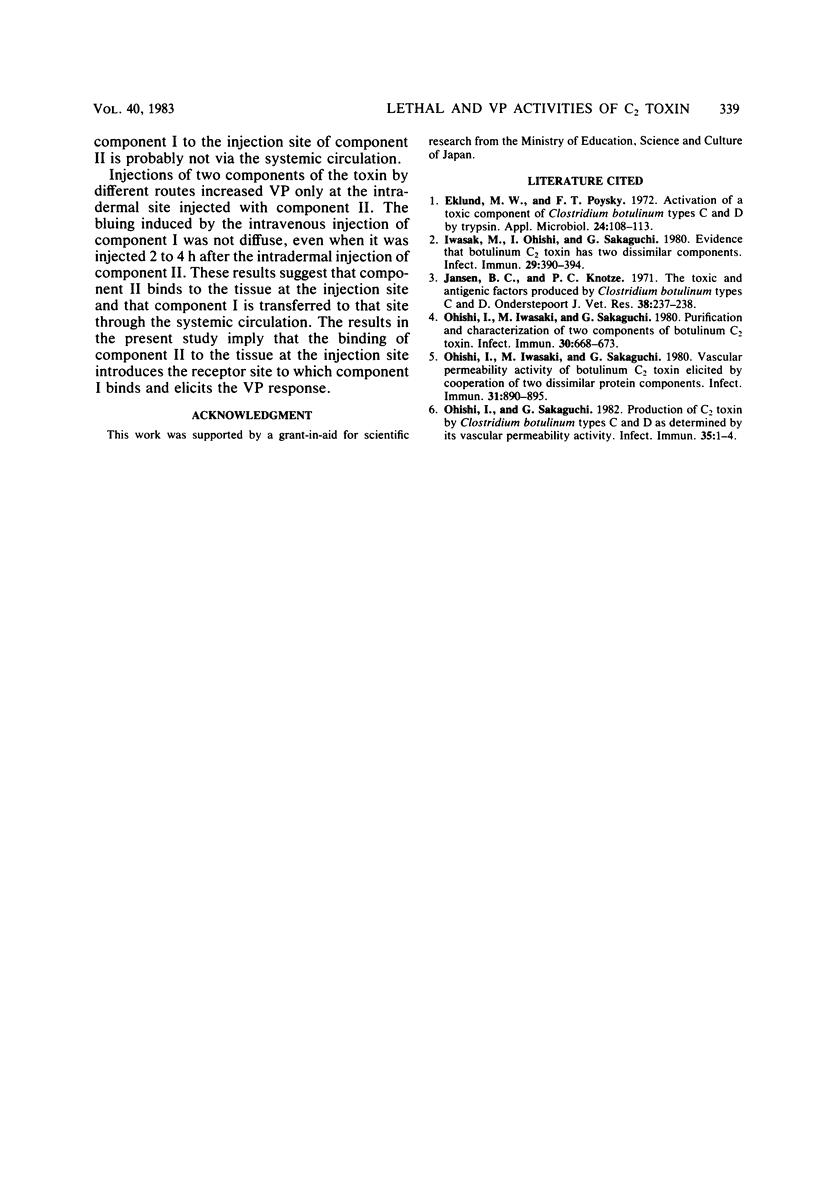Abstract
Two components, designated I and II, of botulinum C2 toxin were injected separately into the same animal. The intravenous injection of one component at different time intervals after intravenous injection of the other component, irrespective of the sequence, was lethal to mice. When components I and II were injected intradermally into separate sites, vascular permeability increased only at the site where component II was injected. The sizes of blued areas were smaller with increased distance between the injection sites of components I and II. When one component was injected intravenously and the other intradermally, an increase in vascular permeability was induced at the intradermal site of injection of component II but not at that of component I. These results indicate that the simultaneous injection of components I and II is not always required to elicit the biological activity of C2 toxin. The vascular permeability response induced by separate injections of the two toxin components suggests that the activity of C2 toxin results from component II binding to the tissue around its injection site and component I recognizing the altered tissue.
Full text
PDF



Images in this article
Selected References
These references are in PubMed. This may not be the complete list of references from this article.
- Eklund M. W., Poysky F. T. Activation of a toxic component of Clostridium botulinum types C and D by trypsin. Appl Microbiol. 1972 Jul;24(1):108–113. doi: 10.1128/am.24.1.108-113.1972. [DOI] [PMC free article] [PubMed] [Google Scholar]
- Iwasaki M., Ohishi I., Sakaguchi G. Evidence that botulinum C2 toxin has two dissimilar components. Infect Immun. 1980 Aug;29(2):390–394. doi: 10.1128/iai.29.2.390-394.1980. [DOI] [PMC free article] [PubMed] [Google Scholar]
- Jansen B. C., Knoetze P. C. Tryptic activation of Clostridium botulinum type C beta toxin. Onderstepoort J Vet Res. 1971 Dec;38(4):237–238. [PubMed] [Google Scholar]
- Ohishi I., Iwasaki M., Sakaguchi G. Purification and characterization of two components of botulinum C2 toxin. Infect Immun. 1980 Dec;30(3):668–673. doi: 10.1128/iai.30.3.668-673.1980. [DOI] [PMC free article] [PubMed] [Google Scholar]
- Ohishi I., Iwasaki M., Sakaguchi G. Vascular permeability activity of botulinum C2 toxin elicited by cooperation of two dissimilar protein components. Infect Immun. 1981 Mar;31(3):890–895. doi: 10.1128/iai.31.3.890-895.1981. [DOI] [PMC free article] [PubMed] [Google Scholar]
- Ohishi I., Sakaguchi G. Production of C2 toxin by Clostridium botulinum types C and D as determined by its vascular permeability activity. Infect Immun. 1982 Jan;35(1):1–4. doi: 10.1128/iai.35.1.1-4.1982. [DOI] [PMC free article] [PubMed] [Google Scholar]




